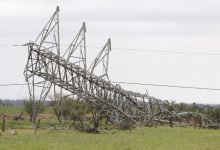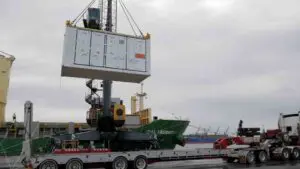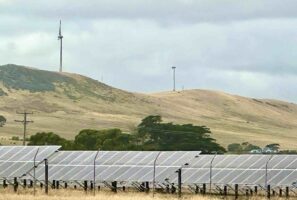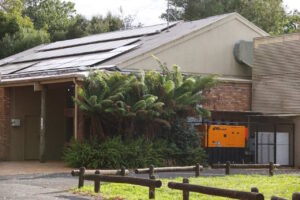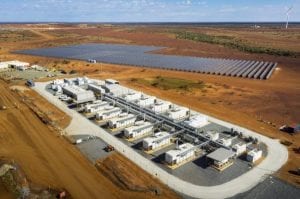The French-owned renewable energy developer Neoen says there is a risk that wind farms in South Australia could face a class action suit over the state-wide blackout in September, 2016.
The risk was cited in Neoen’s documentation for its upcoming initial public offering, where it will seek to raise $A850 million in a share market float.
Most of the company’s revenue now comes from Australia, where it owns the Hornsdale wind farm, the Tesla big battery, and three solar farms in NSW, and is building new wind, solar and battery projects in Victoria and NSW, and has others planned in those states and in South Australia and Queensland.
The documents reveal, for the first time, some of the detailed contracts, costs and revenues of the Tesla big battery that was built last year next to the 317MW Hornsdale wind farm.
But it also raises the possibility of court action over the state-wide blackout, and the possibility of “significant” losses if it lost a claim for damages connected with the blackout.
The Australian Energy Market Operator found that the blackout was caused by catastrophic failures triggered by a series of tornadoes that knocked down three main transmission lines.
Its investigations also found that many of the state’s wind farms had software for system protection at settings hitherto unknown to AEMO that took them off-line after a series of faults caused by the downed transmissions lines.
“These system protection measures led to a reduction or even stoppage of such wind farms’ output and hence an increase in imported power flowing into the network, specifically from the neighbouring state of Victoria, through an inter-connector that overloaded and was tripped, leading to a complete system shut-down,” Neoen notes,
Neoen says there is a possibility that a yet to be delivered report by the Australian Energy Regulator could impose fines of up to $20,000 to Hornsdale – and other wind farms – for “non-compliance” with certain National Electricity Rules. Only the first 100MW stage of Hornsdale was operating at the time.
“(Neoen) believes it has a strong basis to contest any infringement notice that may be issued,” it says in its document. But it also notes that any legal battle could be drawn out and expensive.
“The imposition of a penalty would increase the risk of a class action lawsuit against (Hornsdale 1) by claimants requesting compensation for damage incurred in connection with the blackout.
“Defending against such legal action would be costly and any related losses could be significant.”
A spokesman for the AER said the report was expected to be delivered by the end of the year.
The report is expected to be comprehensive, and will also look closely at the actions of AEMO, and its decision on that day not to take preventative action – such as putting extra capacity on standby and by dialling down the imports from Victoria (actions which are now standard) despite warnings of storm activity.
The report may also look at why AEMO didn’t know about the software settings on the wind farm.
It should also investigate the settings on the country’s big synchronous generators, with many analysts and reports suggesting they present a big threat to system security because of control systems that have been allowed to loosen.
Those settings have since been rectified, AEMO has taken a more cautious approach to dealing with credible contingencies, has introduced new rules about the amount of back-up needed in South Australia, is taking a closer look at weather forecasts, and also has the Tesla big battery to provide support at critical times, such as when two big transmissions lines failed last month.

